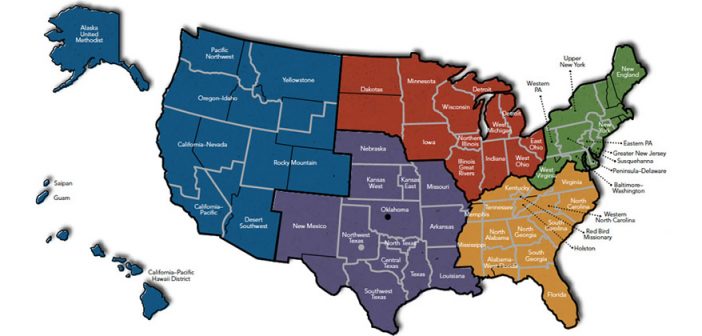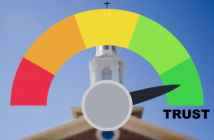The Constitution of the United Methodist Church identifies the annual conference as “the basic body in the Church.” The annual conference admits persons into ordained ministry, and it is from the annual conference that clergy go to their assignments. Clergy hold their membership in the annual conference and not in congregations.
With the focus on local churches in recent times, it may seem strange to many to find such a prominent role for what they view as a middle structure between denomination and congregation.
The annual conference, however, will continue to have a pivotal role in the mission of United Methodism, and, because of new circumstances, it will exist in different ways in the future than in the past. The centrality of the annual conference cannot remain unless historical and theological values are applied to fit changing times, even as John Wesley felt free to modify tradition for the sake of the gospel. As long as bishops appoint clergy, the connection of the pastors to the annual conference is a given. Congregations and laity likely will be more guarded in their relationship to the conference than clergy.
In addition to the “sent ministry” ecclesiology represented by the annual conference, there is another sense in which the annual conference is the “basic unit” in a way that no other unit of the church is. Even with mergers that have increased the geographic size of conferences, the annual conference continues to be the arena in which the culture and ethos of a region is best known and appreciated. It is appreciated not in the sense of thinking that everything is good, but rather in understanding how it came to be and how to relate to it in caring and logical ways. This does not mean that the territory encompassed by an annual conference, even the smallest, is monolithic. The opposite is usually the case. But it is within the annual conference that these subtleties and variations are best understood.
Usually it is those outside the annual conference who think of states or regions represented by annual conferences in a monolithic light. I was a pastor in Mississippi for many years. For many outside Mississippi, the state has a singular identity. While there are some common characteristics, there are stark differences between churches on the Gulf Coast and those in the Delta. Virginia may bring to mind certain images for the outsider, but within the conference they understand that the DC suburbs of northern Virginia, Shenandoah, Tidewater, and Richmond all are in some ways as different as different states.
I have been struck over the years by how intimately acquainted conference leaders tend to be with the various cultures and people in their midst. They show a remarkable ability to operate with both integrity and understanding among the differences within their conferences. At the very least, at the annual conference level there is a heightened sense of how important it is to account for the varieties of cultural and religious expression.
This awareness means that the annual conference is the level at which propagation of the Wesleyan witness through the United Methodist Church is best guided. In today’s context, that role is critical.
A video version of The Annual Conference as the Basic Unit of the Church is below.
This article is adapted from Lovett Weems’s book Focus: The Real Challenges That Face the United Methodist Church (Abingdon, 2012), available at Cokesbury and Amazon.




